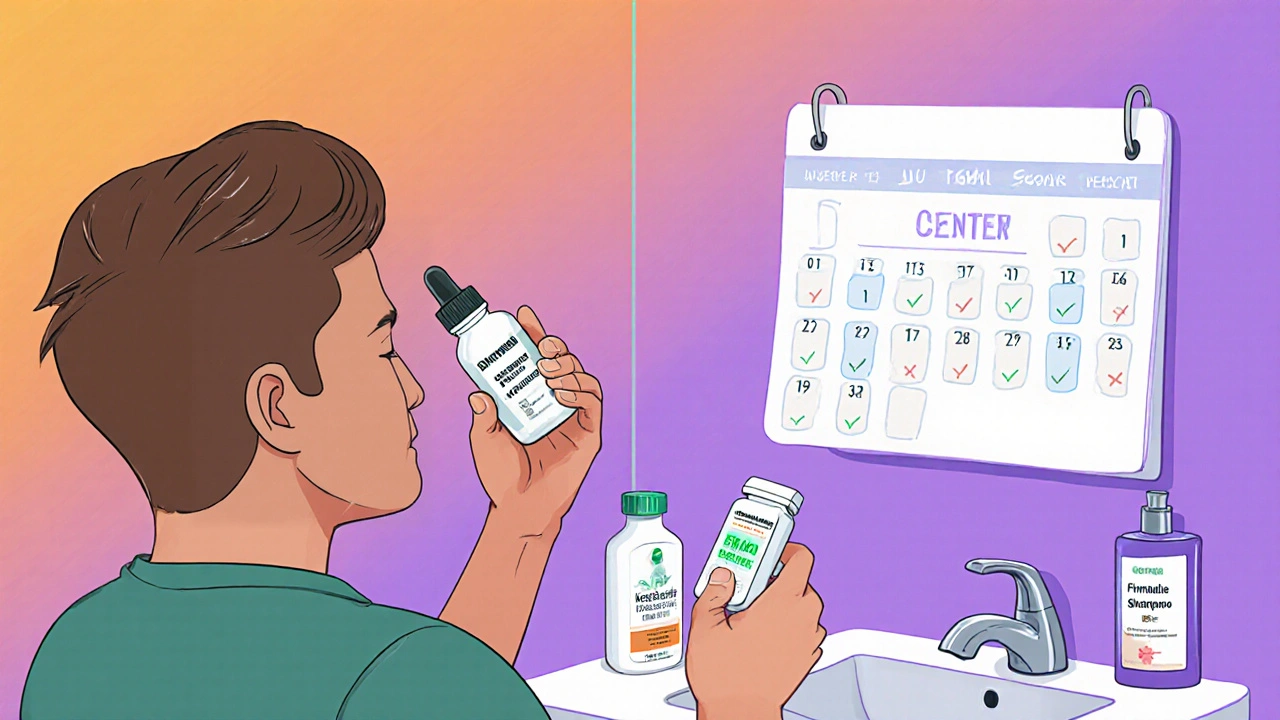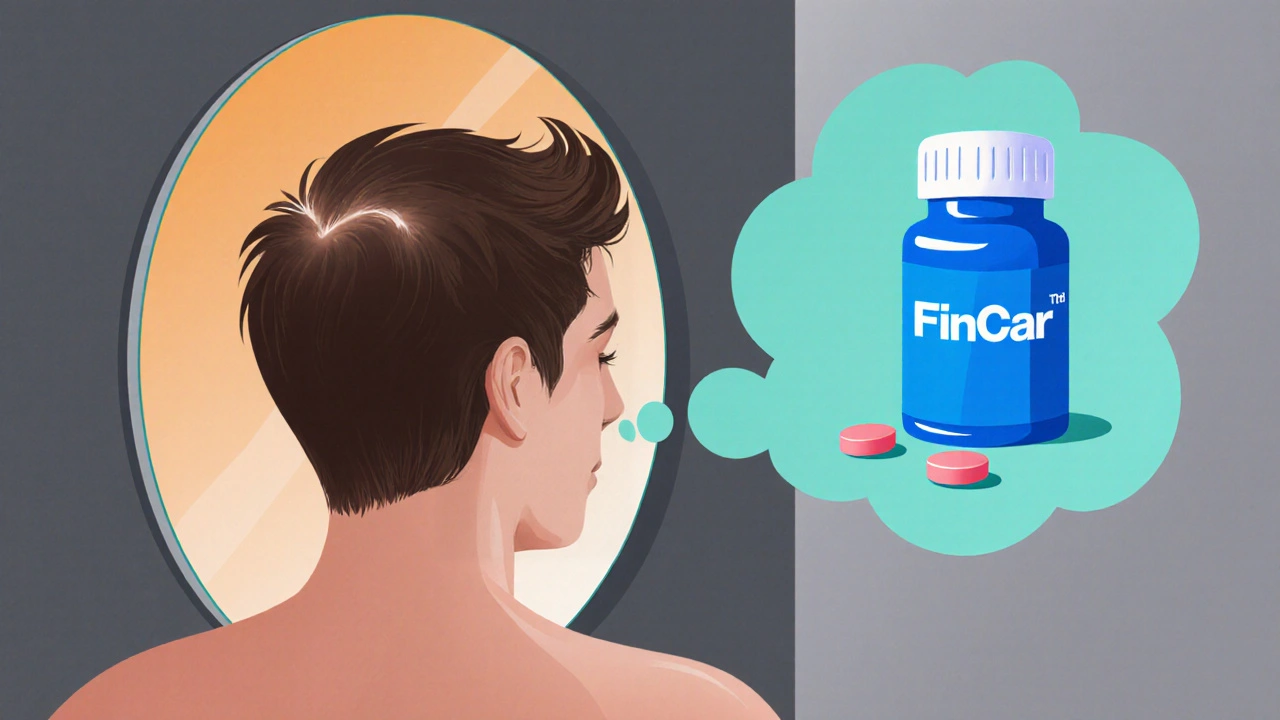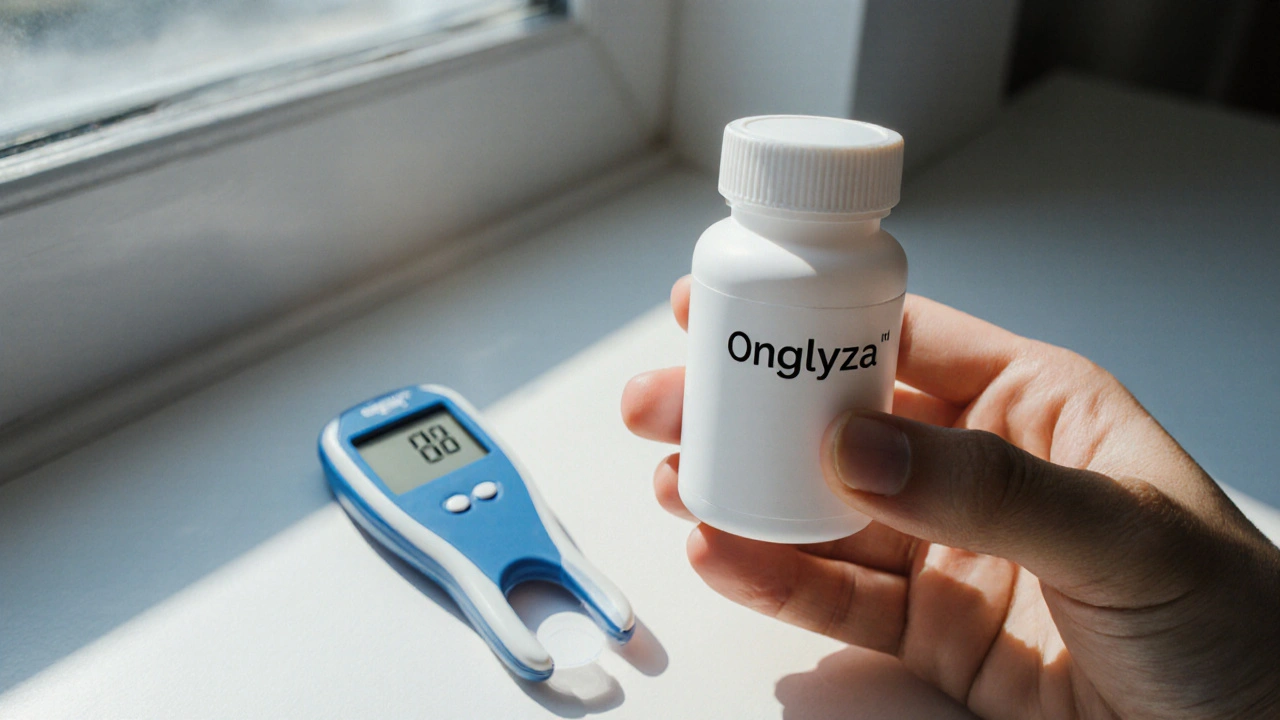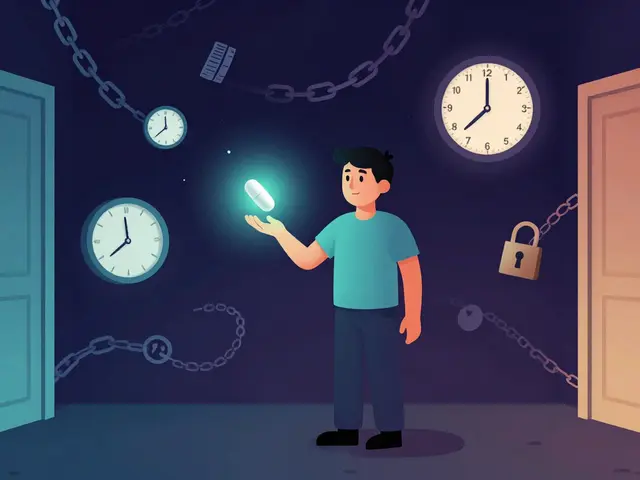Hair Loss Treatment Decision Tool
This tool helps you identify the most appropriate hair loss treatment based on your specific needs. Answer the questions below to get personalized recommendations.
When you start noticing thinning strands on the crown or at the hairline, you quickly wonder which product actually works. Finasteride is a synthetic 5‑alpha‑reductase inhibitor that blocks the conversion of testosterone to dihydrotestosterone (DHT), the hormone largely responsible for androgenic alopecia. Marketed in Australia as Fincar, it’s often prescribed for men who want a medical‑grade solution. But is it the best choice, or are there cheaper or safer alternatives that deliver similar results?
Quick Takeaways
- Finasteride reduces DHT by about 70 % and can halt hair loss in 80 % of users.
- Side‑effects such as reduced libido or erectile issues affect roughly 2‑4 % of patients.
- Dutasteride is a stronger DHT blocker but requires more monitoring.
- Topical minoxidil works via a different pathway - vasodilation - and is best paired with a DHT inhibitor.
- Natural extracts (saw palmetto, pumpkin seed oil) have modest evidence and are useful for mild cases.
How Finasteride (Fincar) Works
Finasteride targets the type II isoform of the 5‑alpha‑reductase enzyme. By lowering scalp DHT levels, hair follicles stay in the anagen (growth) phase longer, which translates into thicker strands and slower shedding. Most dermatologists start patients on a 1 mg daily tablet, the same dose used in the US‑approved brand Propecia. Blood tests are rarely needed, but doctors may check liver function if the treatment extends beyond a year.
Key Alternatives to Consider
Below is a side‑by‑side look at the most common alternatives that people compare with Finasteride. Each option tackles hair loss from a slightly different angle, so the best regimen often mixes two or more.
| Product | Mechanism | Typical Dose / Regimen | FDA / TGA Status | Pros | Cons |
|---|---|---|---|---|---|
| Finasteride (Fincar) | Inhibits type II 5‑alpha‑reductase → ↓ DHT | 1 mg oral tablet daily | Prescribed (TGA‑approved) | Clinically proven, convenient oral dose | Potential sexual side‑effects, requires prescription |
| Dutasteride (Avodart) | Blocks type I & II 5‑alpha‑reductase → ↓ DHT more | 0.5 mg oral tablet daily | Off‑label for hair loss (prescribed) | Higher DHT reduction (≈90 %) | Higher risk of systemic side‑effects, not first‑line |
| Minoxidil (Rogaine) | Vasodilator → ↑ scalp blood flow, follicle stimulation | 5% solution twice daily (men) or 2% foam daily (women) | OTC topical | Easy to obtain, works on its own | Scalp irritation, requires lifelong use |
| Saw Palmetto Extract | Natural DHT inhibitor (weak) | 320 mg oral capsule daily | Supplement (unregulated) | Cheaper, fewer sexual side‑effects | Less robust evidence, variable quality |
| Ketoconazole Shampoo (Nizoral) | Anti‑fungal with anti‑androgen properties | 2% shampoo twice weekly | OTC shampoo | Reduces scalp inflammation, easy to add | Only modest DHT reduction, may dry hair |
| Low‑Level Laser Therapy (LLLT) | Photobiomodulation → cellular metabolism boost | 8‑min device sessions 3‑4×/week | Medical device, often OTC | Non‑pharmacologic, painless | Costly equipment, mixed study results |
When to Choose Finasteride Over Others
If you fall into any of these buckets, Finasteride is usually the front‑runner:
- Male pattern baldness (MPB) at Norwood stage III or higher.
- Desire for a once‑daily oral pill rather than topical applications.
- Willingness to obtain a prescription and attend periodic follow‑ups.
- Need for a treatment with strong clinical backing and long‑term data.
For women, especially those of child‑bearing age, Finasteride is generally avoided because of the risk of birth defects. In that case, minoxidil or low‑dose oral anti‑androgens like spironolactone become the safer route.
Combining Finasteride with Complementary Treatments
Most dermatologists recommend a combo approach: pair an oral DHT blocker with a topical agent. Here’s a simple regimen that many patients follow:
- Take 1 mg of Finasteride each morning with food.
- Apply 5% minoxidil solution to the affected scalp area twice a day.
- Wash with ketoconazole shampoo twice a week to keep the scalp clean.
- Schedule a follow‑up visit after three months to assess shedding and side‑effects.
This stack tackles hair loss from three angles - hormonal, vascular, and inflammatory - and often yields faster visible results than any single product.
Cost and Accessibility in Australia
Fincar is listed on the Pharmaceutical Benefits Scheme (PBS) for certain indications, which can bring the cost down to around AUD 30 per month for eligible patients. In contrast, over‑the‑counter minoxidil or supplements may run AUD 25-50 per month, but you’ll need to buy them regularly. LLLT devices can cost AUD 500‑1500 upfront, making them a larger investment.

Potential Side‑Effects and How to Manage Them
Finasteride’s most talked‑about side‑effects are sexual in nature - decreased libido, erectile dysfunction, or reduced ejaculate volume. Studies from 2023‑2024 suggest that these issues resolve in most users after stopping the drug, but a small subset experiences persistent symptoms (so‑called post‑finasteride syndrome). If you notice any change, talk to your GP; dose reduction or switching to dutasteride (with careful monitoring) might help.
Other mild effects include scalp irritation (rare) and a slight increase in PSA readings, which can be confused with prostate concerns. Regular blood work can keep you and your doctor informed.
Frequently Asked Questions
Can women use Finasteride?
Finasteride is not recommended for women, especially those who are pregnant or could become pregnant, because it can cause birth defects. Women usually opt for minoxidil, low‑dose spironolactone, or cosmetic solutions.
How long before I see results?
Most users notice a reduction in shedding after 2‑3 months, but visible regrowth often takes 6‑12 months of consistent use.
Is dutasteride better than finasteride?
Dutasteride blocks both type I and II enzymes, cutting DHT by about 90 % versus 70 % for finasteride. It can be more effective for severe hair loss, but the side‑effect profile is also higher, so doctors often reserve it for patients who don’t respond to finasteride.
Do natural supplements work?
Extracts like saw palmetto and pumpkin seed oil show a modest DHT‑lowering effect in small trials. They’re safe for most people but usually aren’t strong enough as a sole treatment for moderate‑to‑severe alopecia.
What if I stop taking Finasteride?
Hair loss typically resumes within 6‑12 months after discontinuation, returning to the pre‑treatment rate. Some people choose a maintenance plan with a lower dose or switch to topical finasteride to keep benefits while reducing systemic exposure.
Bottom Line: How to Pick Your Best Option
Choosing the right hair‑loss strategy boils down to three questions:
- How severe is your hair loss? (Mild vs. moderate vs. advanced)
- What side‑effects are you willing to tolerate?
- Do you prefer a prescription pill, an over‑the‑counter product, or a device?
If you have moderate to severe male pattern baldness, are comfortable with a prescription, and want the strongest evidence‑based outcome, finasteride (Fincar) remains the gold standard. For those who want a non‑prescription route, start with minoxidil plus ketoconazole shampoo, and consider adding a natural DHT blocker if budget is tight. Severe cases may even benefit from a hair‑transplant consultation after trying medical therapy for a year.
Whatever path you take, consistency is key. Hair follicles don’t magically reverse overnight; they need ongoing support. Keep track of any changes, stay in touch with your dermatologist, and adjust the regimen if side‑effects arise. With the right mix, you can keep the hair you have and even grow a bit more.





Vijaypal Yadav on 20 October 2025, AT 20:21 PM
Finasteride works by inhibiting the type II 5‑alpha‑reductase enzyme, which reduces scalp DHT levels and prolongs the anagen phase.